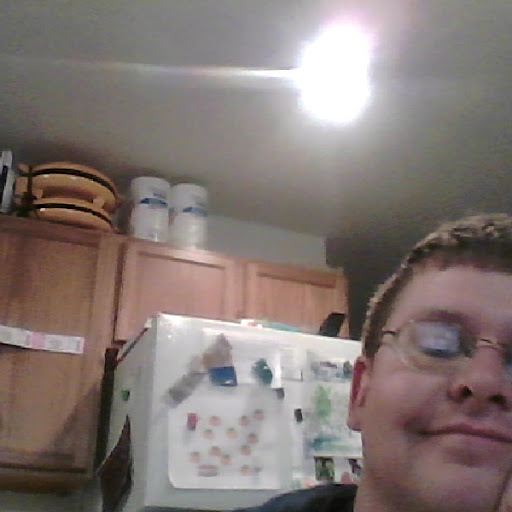Jason J Hamann
age ~55
from Blaine, MN
- Also known as:
-
- Jason Jason Hamann
- Jason J Smith
- Jason J Harmann
- Jason J Hamman
- Jason J Haman
Jason Hamann Phones & Addresses
- Blaine, MN
- 12186 Edison St, Minneapolis, MN 55449 • 7637575593
- West Allis, WI
- Franklin, WI
- Auburn, AL
- Long Grove, IA
- 728 S 111Th Pl, West Allis, WI 53214
Work
-
Position:Protective Service Occupations
Education
-
Degree:Associate degree or higher
Resumes

Manager - New Markets Innovation
view sourceLocation:
Minneapolis, MN
Industry:
Medical Devices
Work:
Boston Scientific 2013 - 2016
Manager
Boston Scientific 2013 - 2016
Manager - New Markets Innovation
Boston Scientific 2007 - 2012
Principal Scientist
Boston Scientific 2005 - 2007
Senior Scientist
Medical College of Wisconsin Jul 2004 - Jun 2005
Instructor
Manager
Boston Scientific 2013 - 2016
Manager - New Markets Innovation
Boston Scientific 2007 - 2012
Principal Scientist
Boston Scientific 2005 - 2007
Senior Scientist
Medical College of Wisconsin Jul 2004 - Jun 2005
Instructor
Education:
Auburn University 1995 - 2000
Doctorates, Master of Education, Masters, Doctor of Philosophy, Physiology Western Illinois University 1989 - 1994
Bachelors, Bachelor of Science, Physiology
Doctorates, Master of Education, Masters, Doctor of Philosophy, Physiology Western Illinois University 1989 - 1994
Bachelors, Bachelor of Science, Physiology
Skills:
Biomedical Engineering
Medical Devices
R&D
Clinical Trials
Cardiology
Fda
Electrophysiology
Biotechnology
Clinical Research
Clinical Development
Iso 13485
Lifesciences
Validation
Life Sciences
Commercialization
Design Control
V&V
Capa
Medical Devices
R&D
Clinical Trials
Cardiology
Fda
Electrophysiology
Biotechnology
Clinical Research
Clinical Development
Iso 13485
Lifesciences
Validation
Life Sciences
Commercialization
Design Control
V&V
Capa

Jason Hamann
view source
Jason Hamann
view source
Jason Hamann
view sourceLocation:
United States

Jason Hamann
view sourceLocation:
United States
Us Patents
-
Remote Sensing In An Implantable Medical Device
view source -
US Patent:8285373, Oct 9, 2012
-
Filed:Jul 13, 2010
-
Appl. No.:12/835288
-
Inventors:David J. Ternes - Roseville MN, US
Krzysztof Z. Siejko - Maple Grove MN, US
Stephen Ruble - Lino Lakes MN, US
Jason J. Hamann - Blaine MN, US -
Assignee:Cardiac Pacemakers, Inc. - St. Paul MN
-
International Classification:A61N 1/00
-
US Classification:607 2
-
Abstract:An embodiment uses an accelerometer to sense heart sounds, and determines heart rate info nation using the sensed heart sounds. An embodiment uses an accelerometer to sense respiratory activity. An embodiment delivers a programmed neural stimulation therapy with a programmed duty cycle, where the programmed duty cycle includes a stimulation ON portion followed by a stimulation OFF portion. An electrode electrically connected to the implanted neural stimulation device is used to remotely detect cardiac activity. The remotely detected cardiac activity is used to detect heart rate information during the stimulation ON portion and to detect heart rate information during the stimulation OFF portion. The detected heart rate information and/or the detected respiration information are used to control a neural stimulation therapy performed by the neural stimulator device and/or are used to provide diagnostic information for the patient's condition.
-
Systems And Methods For Selectively Stimulating Nerve Roots
view source -
US Patent:8386045, Feb 26, 2013
-
Filed:Apr 28, 2009
-
Appl. No.:12/431621
-
Inventors:Weiying Zhao - Cupertino CA, US
Stephen Ruble - Lino Lakes MN, US
Allan C. Shuros - St. Paul MN, US
Jason J. Hamann - Blaine MN, US -
Assignee:Cardiac Pacemakers, Inc. - St. Paul MN
-
International Classification:A61N 1/00
-
US Classification:607 46
-
Abstract:Various system embodiments comprise an implantable lead, an implantable housing, a neural stimulation circuit in the housing, and a controller in the housing and connected to the neural stimulation circuit. The lead has a proximal end and a distal end. The distal end is adapted to deliver neural stimulation pulses to the ventral nerve root and the dorsal nerve root. The proximal end of the lead is adapted to connect to the housing. The neural stimulation circuit is adapted to generate neural stimulation pulses to stimulate the ventral nerve root or the dorsal nerve root using the implantable lead. The controller is adapted to control the neural stimulation circuit to deliver a neural stimulation treatment.
-
Systems And Methods For Delivering Vagal Nerve Stimulation
view source -
US Patent:8401640, Mar 19, 2013
-
Filed:Apr 11, 2012
-
Appl. No.:13/444400
-
Inventors:Weiying Zhao - Cupertino CA, US
Quan Ni - Shoreview MN, US
Stephen Ruble - Lino Lakes MN, US
Jason J. Hamann - Blaine MN, US -
Assignee:Cardiac Pacemakers, Inc. - St. Paul MN
-
International Classification:A61N 1/00
-
US Classification:607 9
-
Abstract:According to various method embodiments, a person is indicated for a therapy to treat a cardiovascular disease, and the therapy is delivered to the person to treat the cardiovascular disease. Delivering the therapy includes delivering a vagal stimulation therapy (VST) to a vagus nerve of the person at a therapeutically-effective intensity for the cardiovascular disease that is below an upper boundary at which upper boundary the VST would lower an intrinsic heart rate during the VST.
-
Pressure-Driven Intermittent Pacing Therapy
view source -
US Patent:8401642, Mar 19, 2013
-
Filed:Aug 6, 2009
-
Appl. No.:12/537165
-
Inventors:Robert Shipley - Austin TX, US
Allan C. Shuros - St. Paul MN, US
Jason J. Hamann - Blaine MN, US -
Assignee:Cardiac Pacemakers, Inc. - St. Paul MN
-
International Classification:A61N 1/00
-
US Classification:607 17
-
Abstract:Cardioprotective pre-excitation pacing may be applied to stress or de-stress a particular myocardial region delivering of pacing pulses in a manner that causes a dyssynchronous contraction. Such dyssynchronous contractions are responsible for the desired cardioprotective effects of pre-excitation pacing but may also be hazardous. Described herein is a method and system that uses measures of a patient's physiological response to ventricular dyssynchrony to control the duty cycles of intermittent pre-excitation pacing.
-
Method And Apparatus For Controlling Neurostimulation According To Physical State
view source -
US Patent:8433419, Apr 30, 2013
-
Filed:Oct 13, 2011
-
Appl. No.:13/272786
-
Inventors:Abhi V. Chavan - Maple Grove MN, US
Keith R. Maile - New Brighton MN, US
David J. Ternes - Roseville MN, US
Juan Gabriel Hincapie Ordonez - Maple Grove MN, US
Stephen Ruble - Lino Lakes MN, US
Jason J. Hamann - Blaine MN, US -
Assignee:Cardiac Pacemakers, Inc. - St. Paul MN
-
International Classification:A61N 1/00
-
US Classification:607 59
-
Abstract:A neurostimulation system senses a signal indicative of a patient's physical state such as posture and/or activity level. In various embodiments, a stored value for each of stimulation parameters controlling delivery of neurostimulation is selected according to the patient's physical state. In various embodiments, values of the stimulation parameters are approximately optimized for each of a number of different physical states, and are stored for later selection.
-
Automatic Selection Of Lead Configuration For A Neural Stimulation Lead
view source -
US Patent:8452406, May 28, 2013
-
Filed:Aug 29, 2011
-
Appl. No.:13/220423
-
Inventors:David J. Ternes - Roseville MN, US
Jason Hamann - Blaine MN, US
Juan Gabriel Hincapie Ordonez - Maple Grove MN, US
Stephen Ruble - Lino Lakes MN, US -
Assignee:Cardiac Pacemakers, Inc. - St. Paul MN
-
International Classification:A61N 1/00
-
US Classification:607 28
-
Abstract:A neurostimulation system includes a neural stimulation lead having a proximal portion and a distal portion and including a plurality of electrodes along the distal portion. The plurality of electrodes are configured for positioning proximate a portion of the autonomic nervous system. A neural stimulation circuit, coupled to the plurality of electrodes, delivers neural stimulation pulses to the plurality of electrodes. A processor and controller is configured to control the neural stimulation circuit to deliver first neural stimulation pulses to each of a plurality of electrode configurations. Each electrode configuration includes one or more of the plurality of electrodes. The processor and controller is further configured to receive information related to motor fiber activity that is induced in response to delivery of the first neural stimulation pulses to each of the plurality of electrode configurations and to identify the electrode configurations that induce the motor fiber activity.
-
Temperature Assisted Stimulation
view source -
US Patent:8463377, Jun 11, 2013
-
Filed:May 6, 2010
-
Appl. No.:12/775215
-
Inventors:Barun Maskara - Blaine MN, US
Jason J. Hamann - Blaine MN, US
Stephen Ruble - Lino Lakes MN, US
Craig Stolen - New Brighton MN, US -
Assignee:Cardiac Pacemakers, Inc. - St. Paul MN
-
International Classification:A61N 1/18
A61N 1/00
A61F 7/00
A61F 7/12 -
US Classification:607 3, 607 2, 607 99, 607116, 607118, 607119
-
Abstract:Various embodiments of an implantable system for delivering therapy comprise at least one of a heat sink or source to either reduce or increase temperature of excitable tissue, a pulse generator and at least one stimulation electrode to deliver electrical stimulation to excitable tissue, a memory and a controller. The memory has instructions for performing at least one stimulation routine and at least one thermal routine, and further has integration instructions for integrating the thermal routine(s) with the stimulation routine(s). The controller is configured to operate on the instructions to perform the stimulation routine(s) using the pulse generator and the at least one stimulation electrode, to perform the thermal routine(s) using the heat sink or the heat source, and to operate on the integration instructions to integrate thermal routine(s) with the stimulation routine(s).
-
Blood Volume Redistribution Therapy For Heart Failure
view source -
US Patent:8483821, Jul 9, 2013
-
Filed:Jul 26, 2010
-
Appl. No.:12/843444
-
Inventors:Viktoria A. Averina - Roseville MN, US
Jason J. Hamann - Blaine MN, US
Stephen Ruble - Lino Lakes MN, US
Allan C. Shuros - St. Paul MN, US -
Assignee:Cardiac Pacemakers, Inc. - St. Paul MN
-
International Classification:A61N 1/00
A61B 5/02
A61B 5/05 -
US Classification:607 2, 607 4, 607 5, 607 6, 607 9, 600508, 600529, 600547
-
Abstract:A first fluid status indicator of a pulmonary fluid status associated with pulmonary edema and a second fluid status indicator of a non-pulmonary fluid status can be used to provide an alert or to control a therapy for pulmonary edema. Additionally, intermittent cardiac blood volume redistribution therapy can be used to provide cardiac conditioning in heart failure patients.

Jason Hamann
view source
Jason Hamann
view source
Jason B Hamann
view source
Jason Hamann
view source
Jason Hamann
view source
Jason Hamann
view source
Jason Hamann
view source
Jason Hamann
view sourceYoutube
Myspace
Classmates

Jason Hamann
view sourceSchools:
Athens High School Athens MI 1994-1998
Community:
Tracy Maggart, Tracey Harrington, Patrick Burelle

Jason Glick (Hamann) (Ham...
view sourceSchools:
Water Valley High School Water Valley MS 1990-1994
Community:
Faye Poindexter, Rick Beasley, Harvey Carr

Jason Hamann
view sourceSchools:
Bonfield Elementary School Bonfield IL 1997-2001
Community:
Heather Dedo

Jason Hamann, Albany High...
view source
Bonfield Elementary Schoo...
view sourceGraduates:
Jason Hamann (1997-2001),
Naithan Richards (1985-1989),
Seth Lacey (1986-1989),
Cherie Chouinard (1971-1975)
Naithan Richards (1985-1989),
Seth Lacey (1986-1989),
Cherie Chouinard (1971-1975)

Water Valley High School,...
view sourceGraduates:
Marshall Gardner (2004-2008),
Jason Hamann (1990-1994),
Shwanda Samuel (2005-2009),
Tamara Johnson (1998-2002),
Naketa White (1991-1995)
Jason Hamann (1990-1994),
Shwanda Samuel (2005-2009),
Tamara Johnson (1998-2002),
Naketa White (1991-1995)

Athens High School, Athen...
view sourceGraduates:
Jason Hamann (1994-1998),
Hayley Fuller (1995-1999),
Carolyn Insler (1966-1969)
Hayley Fuller (1995-1999),
Carolyn Insler (1966-1969)

Port Clinton High School,...
view sourceGraduates:
Roberta Whittington (1961-1965),
Eligio Hernandez (1961-1965),
Jason Hamann (1991-1995),
Debra McGee (1978-1982)
Eligio Hernandez (1961-1965),
Jason Hamann (1991-1995),
Debra McGee (1978-1982)
Googleplus

Jason Hamann
Work:
Bettendorf High School - Teacher

Jason Hamann
Get Report for Jason J Hamann from Blaine, MN, age ~55





